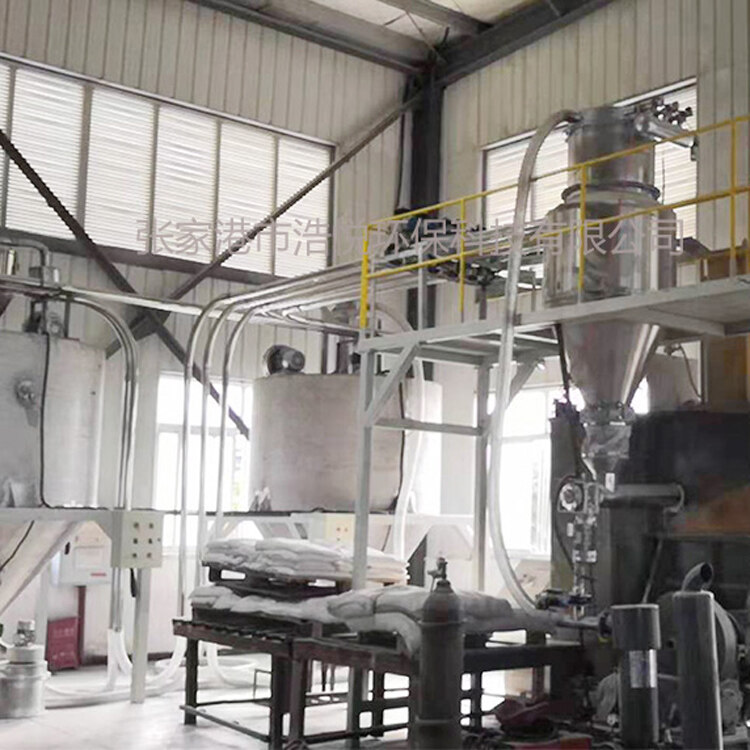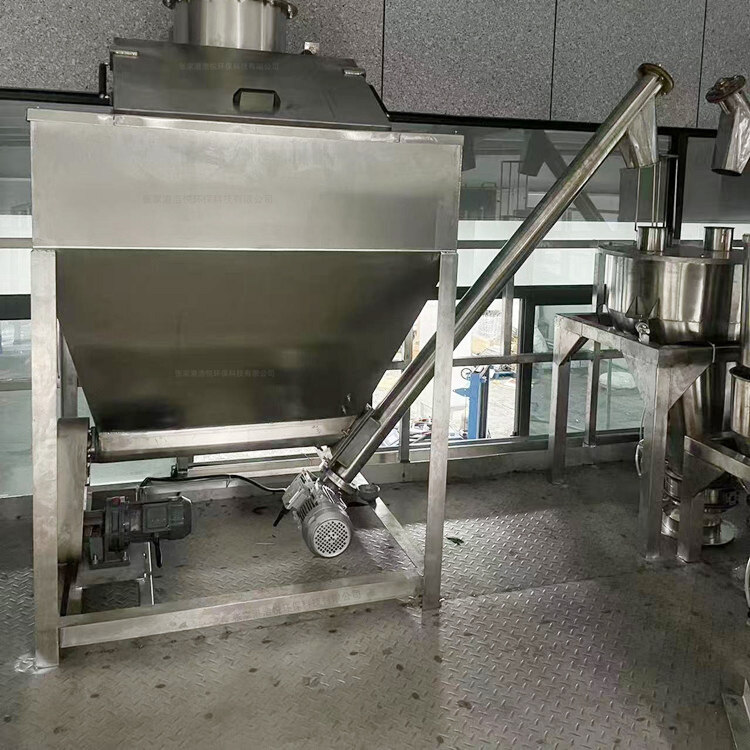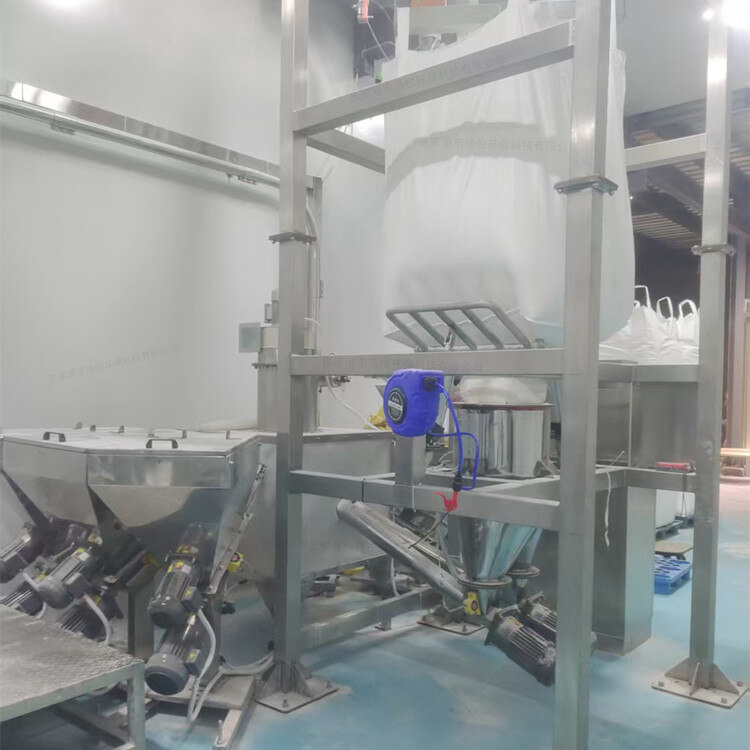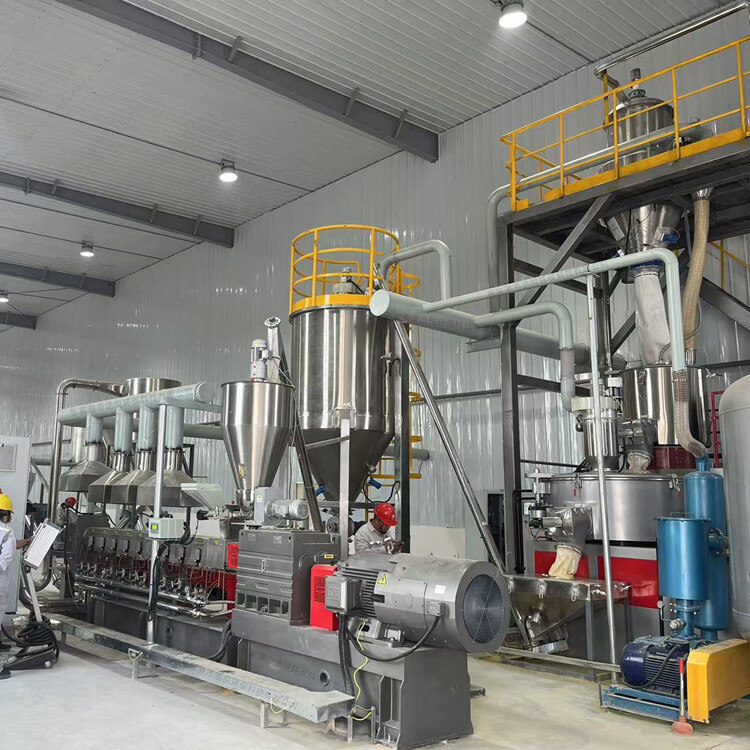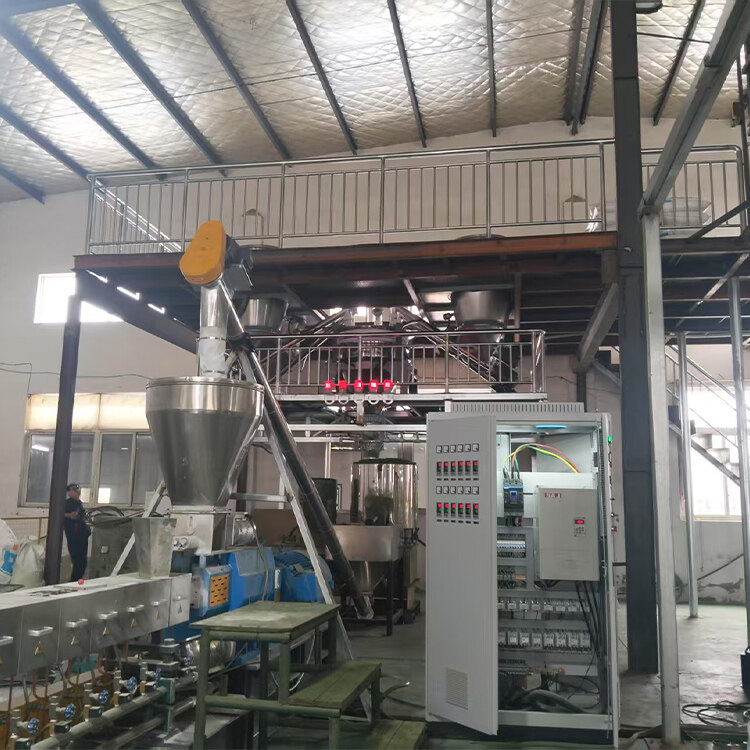- Introduction to automatic batching machine and fully automatic batching machine equipment
- The powder metering system tells you about the introduction of the mixing and drying machine
- 1000kg vacuum feeding machine
- Fully automatic small material batching system
- Research on Innovation of Automatic Weighing Machine Technology
- Design and operation of automatic batching system using PLC, industrial computer and frequency converter
Fully automatic batching system for internal mixer
- Category:Batching Plant
- Hits:113次
- Release Date:2025-06-30
- Share:
- Inquiry
- Details
In the mixing production of polymer materials such as rubber and plastic, the accuracy and efficiency of material ratio directly determine product quality and enterprise efficiency. As a key technological achievement in industrial automation, the fully automatic batching system of the internal mixer integrates intelligent metering, automated conveying, and precise control technology to achieve unmanned operation of the entire process from storage, metering to conveying of raw rubber, carbon black, additives, and other materials. It seamlessly collaborates with the internal mixer, significantly improving production stability and refinement level. The following will provide a comprehensive interpretation of the system from the aspects of system composition, working principle, core advantages, application scenarios, and development trends.
1、 System core composition architecture
The fully automatic batching system of the internal mixer consists of five core modules, which cooperate with each other to form a highly integrated automation system.
(1) Intelligent material storage unit
This unit designs exclusive storage solutions for different material characteristics. The block shaped raw rubber is stored in a three-dimensional silo with an automatic cutting device, which is grabbed by a robotic arm and cut according to the set weight; Powdered materials (such as carbon black and calcium carbonate) are stored in sealed negative pressure silos equipped with level sensors and pulse dust removal devices to monitor inventory in real-time and prevent dust spillage; Liquid additives are stored in a constant temperature storage tank with a built-in mixer to ensure uniform composition, and an anti leakage alarm system is also installed. Each material warehouse is independently partitioned to avoid cross contamination.
(2) High precision measuring unit
The measuring unit is the core of achieving precise batching, using a combination of multiple advanced measuring technologies. For block materials, the high-precision weighing platform is linked with the servo cutting system to control the error within ± 0.3%; Powdered materials are measured using a weight loss scale, which monitors the weight changes of the silo in real time and adjusts the screw speed to achieve a measurement accuracy of ± 0.5%; For liquid additives, Coriolis mass flow meters or high-precision plunger pumps are used to achieve precise addition in small amounts, with an accuracy of ± 0.1%. All measuring equipment is equipped with automatic calibration function to ensure long-term stable operation.
(3) Automated conveying unit
The conveying unit adopts differentiated solutions based on the material form. Powdered materials are transported through pneumatic conveying pipelines using vacuum negative pressure or compressed air to achieve long-distance, low loss conveying; Block materials are precisely transported by chain conveyors or truss robots; Liquid additives are combined with corrosion-resistant pipelines and metering pumps to achieve stable pumping. During the transportation process, metal detection and foreign object interception devices are installed to ensure the purity of materials. At the same time, the pipeline adopts a quick detachable design for easy cleaning and maintenance.
(4) Central control system
With industrial computers and PLCs (programmable logic controllers) as the core, equipped with customized ingredient management software. The operator inputs the mixing formula through the human-machine interface (HMI), and the system automatically analyzes the material ratio, feeding sequence, and time parameters. During operation, real-time collection of sensor data from each unit (such as weight, flow rate, temperature), and automatic adjustment of equipment operating status through PID control algorithm; Support multi recipe storage and quick switching, with permission level management function to ensure the security of core data.
(5) Intelligent auxiliary unit
Including dust removal and purification system, automatic cleaning device, and safety protection module. The dust removal system is equipped with multi-level dust collection ports in the material loading and unloading and conveying processes, and is combined with bag filters to control the dust concentration in the workshop within safety standards; The automatic cleaning device regularly performs high-pressure flushing and disinfection on pipelines and measuring equipment; The safety protection module integrates emergency stop, overload protection, leakage monitoring and other functions to ensure the safety of equipment and personnel.
2、 Working principle and process
When the operator inputs production instructions into the central control system, the system starts each step in sequence according to the preset formula: first, the feeding device of the intelligent material storage unit transports the material to the measuring unit, and the measuring equipment accurately weighs or measures according to the set value; After completing the measurement, the automated conveying unit sequentially transports the materials to the feed inlet of the mixer, and achieves seamless docking through a chute or closed pipeline. Throughout the entire process, the central control system monitors the operational status of each device in real-time. In case of measurement deviation or conveying failure, the automatic correction program is immediately activated, such as adjusting screw speed, switching to backup conveying channels, etc. After all materials are added to the internal mixer, the system automatically records batch data and generates production reports, providing a basis for quality traceability and process optimization.
3、 Core technological advantages
(1) Extremely precise measurement control
Through multi-sensor fusion and dynamic compensation algorithms, the system can automatically correct the impact of temperature, air pressure, and material density changes on measurement. For example, in carbon black metering, the feeding amount is dynamically adjusted by combining the weight changes of the silo with the screw conveying speed, ensuring that the ratio error of each batch of materials is less than 50% of the industry standard, significantly improving the stability of the mixed rubber quality.
(2) Automated operation of the entire process
Completely replace manual batching mode and achieve unmanned operation from raw material storage to mixing machine feeding. The system can operate continuously for 7 × 24 hours, reducing the batching time for a single batch by 60% compared to traditional methods. At the same time, it reduces material waste and safety hazards caused by human operation, and lowers enterprise labor costs by 30% -50%.
(3) Flexible production capacity
Support quick switching of hundreds of formulas, adapting to different product needs through parametric design. Enterprises can flexibly adjust their production plans based on orders to meet the needs of multi variety and small batch production scenarios. For example, tire companies can quickly switch the batching tasks of different specifications of tire rubber materials on the same production line.
(4) Digital management and intelligent decision-making
The system automatically collects data on the entire production process, including material consumption, equipment operating parameters, energy consumption indicators, etc., and generates visual reports through big data analysis. Enterprises can optimize formula ratios, predict equipment maintenance cycles, evaluate production costs, and achieve intelligent production management based on this.
4、 Typical application scenarios
(1) Tire manufacturing industry
In the production of tire rubber compound, the system precisely controls the ratio of more than 20 materials such as natural rubber, synthetic rubber, white carbon black, sulfur, etc., to ensure that the strength, wear resistance and other performance indicators of the rubber material meet the standards. After a leading tire company introduced this system, the product yield rate increased from 88% to 96%, saving over 10 million yuan in raw material costs annually.
(2) Rubber products industry
For the production of rubber products such as sealing rings and hoses, the system achieves precise addition of trace additives such as anti-aging agents and accelerators to improve product weather resistance and sealing performance. In the production of automotive rubber parts, the stability of mixed rubber batches has been improved, and product consistency issues have been reduced by more than 70%.
(3) Plastic modification industry
In the production of engineering plastics, the system accurately measures materials such as base resins, flame retardants, antioxidants, etc., helping enterprises produce high-performance plastic products that meet the needs of automotive interiors, electronic and electrical casings, and other fields, achieving a dual improvement in production efficiency and product quality.
5、 Development Trends
In the future, the fully automatic batching system of the internal mixer will deepen its development towards intelligence, integration, and green direction. In terms of intelligence, introducing artificial intelligence algorithms to achieve device self diagnosis and self optimization, and predicting material consumption trends through machine learning; In terms of integration, it deeply integrates with enterprise ERP and MES systems to achieve real-time collaboration of production planning, material inventory, and batching operations; Greening focuses on energy conservation and consumption reduction, using variable frequency drive and waste heat recovery technology to reduce energy consumption, while optimizing dust removal and waste recycling systems to help the industry achieve sustainable development.


